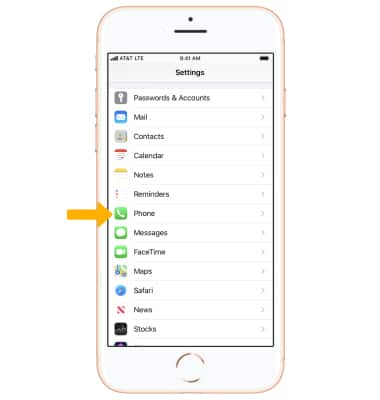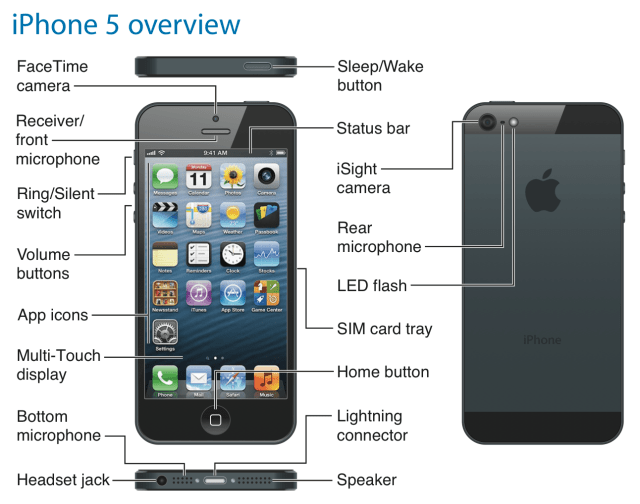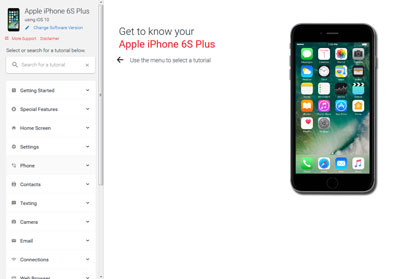Apple’s iPhone 6 manual user guide for iPhone 6, 6S and 6S Plus: The iPhone 6 and iPhone 6 Plus has become the latest trend these days. Each and every Apple user is trying to replace their existing iPhone’s with the new iPhone 6 and iPhone 6 Plus.These new devices are grasping the attention of many users. Find all Apple iPhone 6s Support information here: Learn how to activate, set up and use your iPhone with our FAQs, how-to guides and videos. Find out about features and how to troubleshoot issues. Apple Support User Guide for iOS 12. Visit Apple's support website. Get iPhone XS or iPhone XS Max. Troubleshoot iPhone 6s.
| Main display: IPS TFT 16M colors 750 x 1334 px (4.70″) 326 ppi |
| Apple A9 1,50 GHz |
| Li-Po 1715 mAh |
| Internal memory: 16 GB |
| RAM memory: 2 GB |
| 12 Mpx, 4608x2592 px |
Did Not Get User Manual For My Iphone 6s Battery
| Other names: | A1633, A1688 |
| Dimensions: | 138,3 x 67,1 x 7,1 mm |
| Weight: | 143 g |
| GSM frequencies: | 850/900/1800/1900 |
| Standard UMTS: | 850/900/1700/1900/2100 |
| Standard battery: | Li-Po 1715 mAh |
| Stand-by (max.): | 3G: 240 h |
| Talk time (max.): | 3G: 13 h |
| Internal memory: | 16 GB |
| RAM memory: | 2 GB |
| Operating system: | iOS 9 |
| Processor: | Apple A9 1,50 GHz |
| Fingerprint scanner: | Yes |
| Main display: | IPS TFT 16M colors 750 x 1334 px (4.70″) 326 ppi |
| Touchscreen: | Yes |
| Digital camera: | 12 Mpx, 4608x2592 px |
| Secondary camera: | 5 Mpx, 2560x1920 px |
| Flash: | Yes, LED |
| Video: | 3840x2160 px, MPEG4 - 30 fps |
| MP3: | Yes |
| Dictionary: | Yes |
| EMS: | - |
| MMS: | Yes |
| Speakerphone: | Yes |
| Voice dial: | Yes |
| Call forwarding: | Yes |
| e-mail client: | Yes |
| RSS Reader: | Yes |
| IrDA: | - |
| Bluetooth: | Yes, v4.2 |
| GPRS: | Yes |
| EDGE: | Yes |
| WiFi: | Yes, v802.11 a/b/g/n/ac |
| Hotspot WiFi: | Yes |
| DLNA: | - |
| WAP: | Yes, v2.0 |
| xHTML: | Yes |
| HSCSD: | - |
| HSDPA: | Yes, 42,20 Mbit/s |
| HSUPA: | Yes, 5,76 Mbit/s |
| HSPA: | Yes |
| HSPA+: | Yes |
| LTE: | Yes |
| NFC: | Yes |
| WiMAX: | - |
| USB | Yes, v2.0 |
| HDMI | - |
| GPS: | Yes |
| GLONASS: | Yes |
| Push To Talk: | - |
| Java: | - |
| Calendar: | Yes |
| Watch: | Yes |
| Recorder: | Yes |
| Alarm: | Yes |
| Stopwatch: | Yes |
| Organizer: | Yes |
| Calculator: | Yes |
| Polyphony: | Yes |
Mobile terms glossary
GSM stands for Global System for Mobile Communication and is the most popular 2G mobile phone standard in the world.
GSM is used by about 80% of all mobile phones - approximately 2 billion people across more than 212 countries.
The widespread use of the GSM standard has made it easy for most mobile phone users to use their phones overseas thanks to roaming agreements between operators using the same GSM standard.
GSM - then labelled Groupe Spécial Mobile was originally conceived back in 1982 as a European standard for mobile phones. The first GSM network went live in 1992 in Finland.
GSM introduced the concept of the SIM card (Subscriber Identity Module card) - a detachable smart card that lets users swap their phone number and contacts between handset.
3G - Analog cellular phones were the first generation while digital marked the second generation.3G is loosely defined, but generally includes high data speeds, always-on data access, and greater voice capacity.
The high data speeds are possibly the most prominent feature, and certainly the most hyped. They enable such advanced features as live, streaming video.
There are several different 3G technology standards. The most prevalent is UMTS, which is based on WCDMA (the terms WCDMA and UMTS are often used interchangeably).
MMS is an extension of the SMS (Short Message Service) protocol, allowing the exchange of text messages exceeding 160 characters. Unlike SMS, which is text-only, MMS can deliver a variety of media. This media may include up to forty seconds of video, audio, one image, or a slideshow of multiple images. MMS requires a third generation (3G) network to send large MMS messages (though smaller MMS messages may be transmitted over second generation networks using GPRS).
Bluetooth is an industry standard for contactless data transmission and communication between two devices. The range is usually 1 to 10 m and rarely more than 100 m. In some cases, distances of up to 200 m are possible.
GPRS stands for General Packet Radio Service and was the first popular data standard for mobile phones.
GPRS was used for WAP and MMS messages and offered modest connection speeds - typically 30-40 Kbit/s, although the theoretical maximum is 115 Kbit/s. GPRS is known as a 2.5G technology.
One of the early advantages of GPRS is that it s always on so no connection handshake is needed. It is still very popular, especially in the developing world.
The name of EDGE in full is Enhanced Data rates for GSM Evolution. This is a 2.75G technology further developed from the 2G and 2.5G technologies. Its data transmission speed is higher than that of GPRS and is closer to 3G technology.
Wi-Fi is a short-range wireless communication technology adopting the 802.11 wireless network standard. Most of the notebook computers, mobile phones or mobile Internet devices nowadays are able to support Wi-Fi wireless connection. The transmission speed of Wi-Fi can be up to 54 Mbps, while its communication range can reach 305 meters with high stability and reliability. At present, many coffee shops, shopping malls, hotels and airports offer chargeable or free-of-charge Wi-Fi wireless broadband. The service is also available on some public transport.
Universal Serial Bus (USB): A standard port that enables you to connect external devices (such as digital cameras, scanners, keyboards, and mice) to computers. The USB standard supports data transfer at three rates: low speed (1.5MBps), full speed (12Mbps) and high speed (480 MBps).
Mbps=million bits per second.
b>HDMI - High-Definition Multimedia Interface. HDMI is a high definition (HD) interface standard for the transmission of uncompressed digital audio visual data. HDMI can support 720i, 720p, 1080i and 1080p with up to eight channels of audio data. Since HDMI is fully digital and has no image compression the image quality should not suffer form any image degradation.
Full phone specifications Apple iPhone 6s
Apple iPhone 6s specs
Apple iPhone 6s specifications
Apple iPhone 6s Amazon
Apple iPhone 6s price
Apple iPhone 6s for sale
Apple iPhone 6s unlocked
Apple iPhone 6s release date
Apple iPhone 6s ebay
Before you begin
There are a few things to keep in mind and check:
- iOS backups made in iCloud and iTunes back up your mail settings, but not your emails. If you delete or change your email account settings, previously downloaded emails might be removed from your iOS device.
- Make sure that your device is connected to the Internet. To check your cellular-data or Wi-Fi connection, go to Safari and open a webpage.
- Check with your email service provider to find out if there's a temporary service outage on their webpage.
Check the Outbox for unsent emails
If you get a message that says your email wasn’t sent, then that email goes to your Outbox. Check your Outbox and try to send the email again:
- In Mail, tap Mailboxes in the upper-left corner.
- Tap Outbox. If you don’t see an Outbox, then your email was sent.
- Tap an email in the Outbox. Make sure that the recipient’s email address is correct.
- Tap Send.
Did Not Get User Manual For My Iphone 6s Screen
Check your email address and password
If Mail asks you to enter a password for your email account, make sure that your password is correct. To check your email address and password, sign in to your email provider's website.
If you still get a username or password error, contact your email provider or system administrator.
Check iOS Mail Fetch and Notification settings
By default, Fetch New Data settings are based on what is provided by your email service. If Push isn't available as a setting, your account will default to Fetch. These settings affect how your device receives email. To adjust these settings:
- Go to Settings.
- Tap Passwords & Accounts.
- Tap Fetch New Data.
- Choose a setting, like Automatically or Manually, or choose a schedule for how often Mail fetches data.
With iOS 11 and later, Automatically is set by default. Your device will fetch new data in the background only when your device is charging and connected to Wi-FI.
Make sure that your Notification settings are correct for the Mail app:
- Go to Settings, then tap Notifications.
- Tap Mail.
- Tap an email account.
- Adjust your Alerts, Sounds, and Badges.
Check your Mail settings

When you set up your email account on your device, iOS automatically uses the correct account settings for many email providers.
To make sure that your account settings are correct, compare the settings in the Mail app to the settings for your email account:
- Go to Settings > Passwords & Accounts and tap your email account.
- Tap your email address next to Account to see the account information, such as the incoming and outgoing mail servers.
- Check the recommended settings for your email account in the Mail Settings Lookup tool and make sure that they’re the same as what you see on your screen. If you don’t see the settings for your email account, contact your email provider or system administrator.
If you have a POP3 email account, then you can only check email on one device at a time. Close other email programs and sign out of webmail sites that you have open. To check if your email is a POP3 account, go to Settings > Passwords & Accounts, tap your account, tap Account, then look for the label POP Account Information. You can also check the recommended email settings for your POP3 email account in the Mail Settings Lookup tool.
If you still need help
Contact your email provider. You can also remove your email account, then set it up again.
Contact your email provider or system administrator
- Contact your email provider or check their status webpage to see if there's a service outage.
- Ask your email provider or system administrator if you turned on any security features or restrictions, like two-step verification, for your email account. You might need a special password or may need to request authorization from your email provider to send and receive email on your device.
- Check your email account settings with your email provider or system administrator to make sure that they're correct.


Remove your email account and set it up again
- On your computer, sign in to your email provider’s website. Make sure that all of your email is there or make sure that your email is saved somewhere other than your iOS device.
- On your iOS device, go to Settings > Passwords & Accounts.
- Tap the email account that you want to remove.
- Tap Delete Account.
- Add your account again.
Learn more
- Get help sending and receiving messages from your @icloud.com email address.
- Use mailboxes to organize emails on your iPhone, iPad, or iPod touch.
- Use email threads, set up filters, and more in Mail on your on your iPhone, iPad, or iPod touch.
- Use Markup in Mail to add drawings, text, your signature, and more to photos and PDFs.